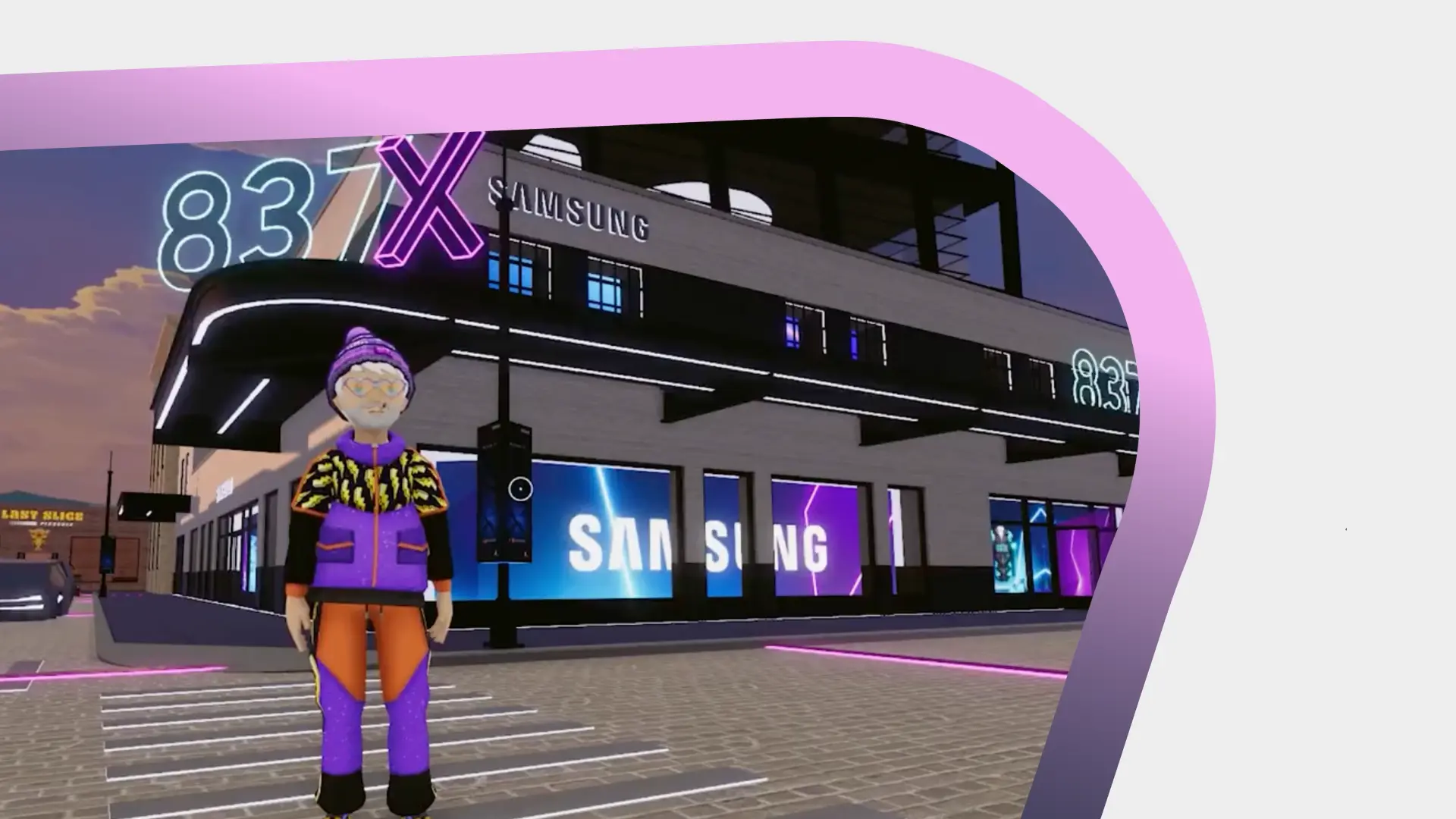
A New Retail Frontier
You walk into your favourite clothing store, greeted by an attentive assistant eager to please, presenting you with a curated selection of items all in your size, your colour, ready for you to try on. After a casual browse you open a door to your left, finding yourself suddenly miles high surveying a beautiful scene from the peak of the alps. An expert instructor stands ready to talk you through a range of ski gear planted in the snow. Once you’ve had your fill another door appears, whisking you away a beach in the Maldives where your friends are waiting for a quick natter.
Impossible? Perhaps in the real world, but in the virtual nothing is off limits. With a range of different technologies beginning to advance and meld together, the potential of a persistent, transcendent digital reality is no longer out of reach. Up until now we have often imagined the possibility of replicating our real experiences in a digital space, recreating familiar shop spaces and tired conventions of the physical retail world. But does it have to be the case? In the digital world the only limits are the imaginations of the creators, and the advent of the metaverse transform dull and dreary Saturday morning shopping runs into mystical, adventurous and even other-worldly shopping experiences as you traverse different realms and engage with brands.
The Metaverse – Future or Fiction?
Let’s take a quick step back and discuss the Metaverse – common topic of futurist discussions, our advances in augmented and virtual reality as well as the ongoing acceleration of processing power are paving the way for a new internet, brought to life in 3D. Once the stuff of science fiction, companies like Meta, Google and Microsoft are banking on the barrier between digital and physical blurring beyond recognition over the next decade.
With this new system comes new opportunities for companies to engage with customers through new and exciting experiences. Our current web-based store fronts and physical retail spots will likely pale in comparison to the new store experiences that the Metaverse will bring and, just like those who believed in and moved quickly in the advent of the internet, its likely that being ahead of the curb and ready to deliver in the Metaverse will elevate retailers head and shoulders above rivals who fail to keep up.

Forever 21 Opens their First VR Store in the online game Roblox
image source: vrscout
Why would I go to a store to buy my new sofa, when I could sample a selection of sofas in my own living room, complete with expert advice and the ability to see exactly how it will look in my house while sampling all kinds of different colours and fabrics? Why would I go to a mountaineering store to buy my new jacket when a rival offers an expert-led metaverse mountaineering experience, incorporating the option to sample different jackets and interact with a community of like-minded people?
The retail experiences of customers are going to change dramatically for consumers, it’s now a case for retailers to decide whether they have the skills and capabilities to become an early adopter, or if not how they will close the gap to avoid obsolescence.
Growth and Interest
Consumers are already beginning to wise up to the benefits of new technology in their retail lives, with an estimated 71% saying that using AR would make them shop more frequently, with 40% willing to pay more for the feature. Customer acceptance is digitally-augmented experiences is growing over time, with the merging of physical and digital shopping experiences happening eventually.

Samsung’s First Store in Decentraland
image source: Twitter, @decentraland
Despite this interest, there are significant barriers for customers to navigate when engaging with these platforms; something retailers will have to overcome if they seek to encourage significant uptake. Less tech-savvy consumers may find it challenging to engage with the equipment required to become part of the digital reality, with non-fungible tokens (NFTs) and blockchain-based currencies potentially proving intimidating to use for those unfamiliar with the systems. Retailers entering the space are already working to make it as easy as possible for consumers to engage with their platforms to sustain their presence, some already including extensive support to facilitate the transition. Some experts are recommending retailers find ways to blur the physical and digital by holding events that span both channels, such as including NFT purchases in their general sales. By anticipating these trends early, successful retailers will ride the wave of Metaverse interest and attract customers to their pocket of the greater digital universe.
What To Do / Opportunities
The metaverse promises near-infinite opportunity for retailers and consumers alike, but what can be done now to prepare? Some estimates place the full realisation of the metaverse to take ten to fifteen more years, but companies can prepare by researching the field extensively, aiming to understand the opportunities on offer and expanding their hoizons to consider what could be possible to create incredible customer experiences. By conducting these thought exercises and use-case investigations now, companies will be ready to maximise when the metaverse is ready for them.
Companies can also consider the opportunities for partnership available with the Metaverse. Many organisations are beginning to develop platforms through which retailers might be able to take their first hesitant steps into the metaverse with relative safety and minimal risk. Nvidia is one such company, building its ‘Omniverse’ platform as a means for companies to design and build spaces on the metaverse using pre-existing tools. They are also able to provide digital assets and content to flesh out a retail experiences at minimal cost.
Meanwhile, other companies such as ‘Metamall’ are working on, as the name suggests, building out digital mall spaces where organisations can buy real estate and populate their metaverse presence. These platforms are based on block-chain software meaning ownership is distributed among users, a much more democratic option for users than purchasing space on a company’s server. While not the most inspired option of retail experience (as mentioned previously, imitating real-world retail somewhat undersells the opportunities of the Metaverse), these kinds of platforms may provide a transitionary step for tentative metaverse newbies. Metaverse shopping malls such as Metamall are predicted to host multiple leading brands, with Metamall anticipating up to 250 brands joining the platform within the first 6 months of launch.
Metaverse Conclusion
The opportunities for a revolution in retail experience are enormous thanks to the advent of the Metaverse. With new technologies growing and expanding and consumer apetite growing, it feels almost inevitable that within the next 5 to 10 years we will be shirking the option of physical retail spaces in favour of grand adventures with our favourite brands across the digital seas of the Metaverse.
It won’t be an easy transition however, and while there are brands working on platforms to support your move to the Metaverse, every retailer must act now to begin researching how they would like to envision their presence in digital reality, and how they will engage with their consumers to encourage them to blur their own real and digital lives.
Planning begins with understanding where you are today, and we strongly encourage organisations to not only understand their digital maturity as an indication of readiness for the Metaverse, but to then go further to assess and measure their Metaverse readiness as the next step in their digital journeys.

